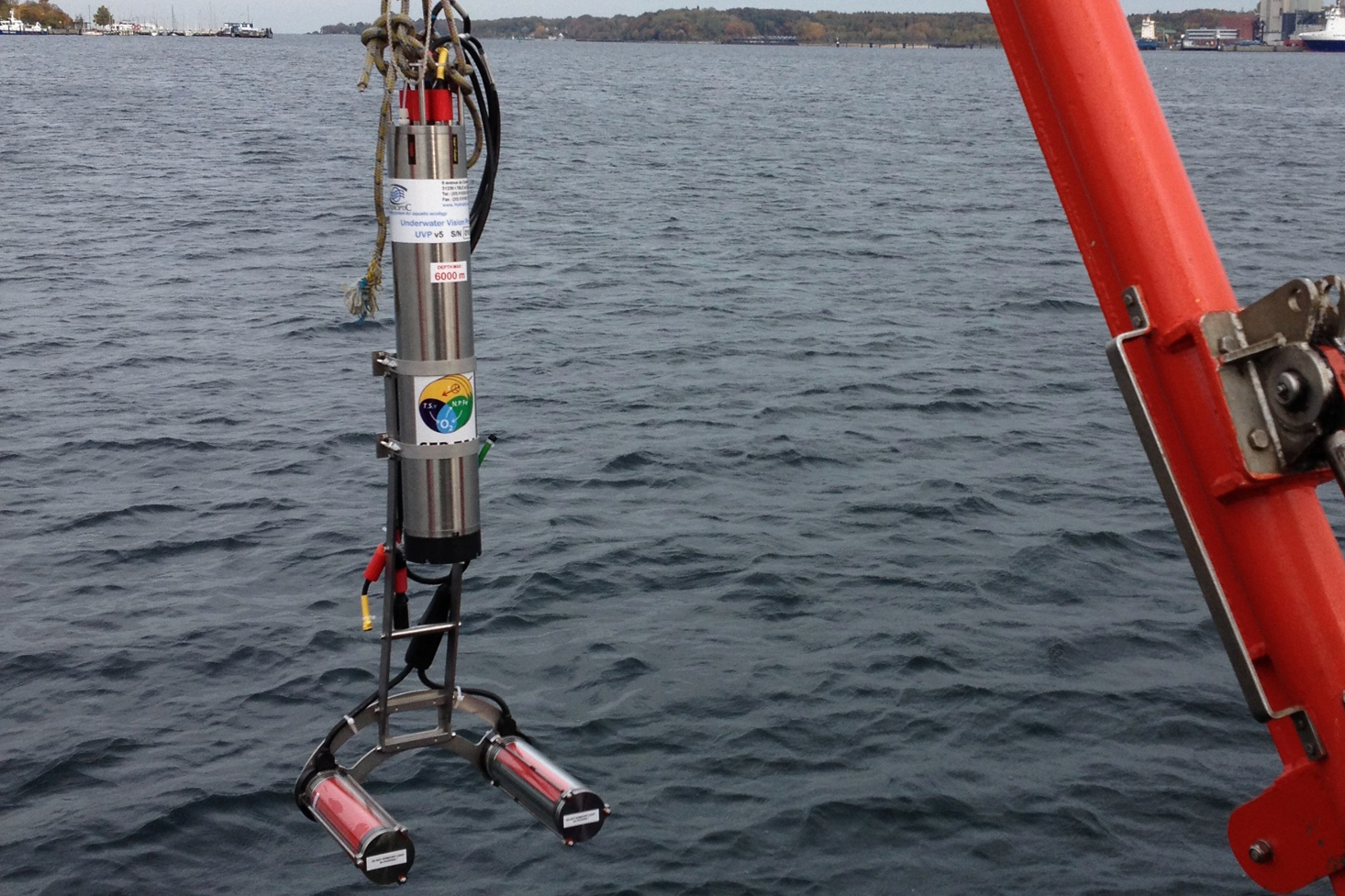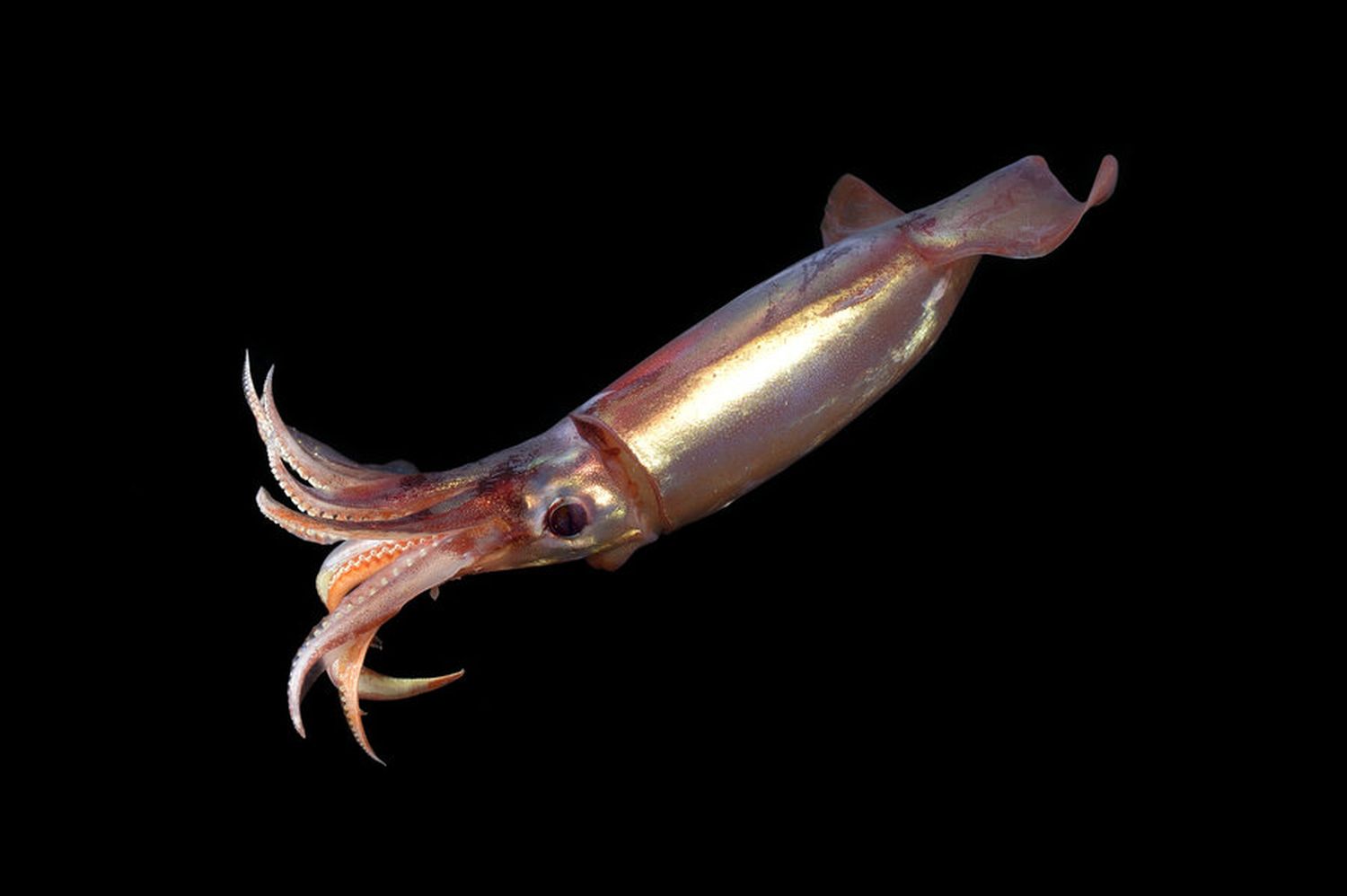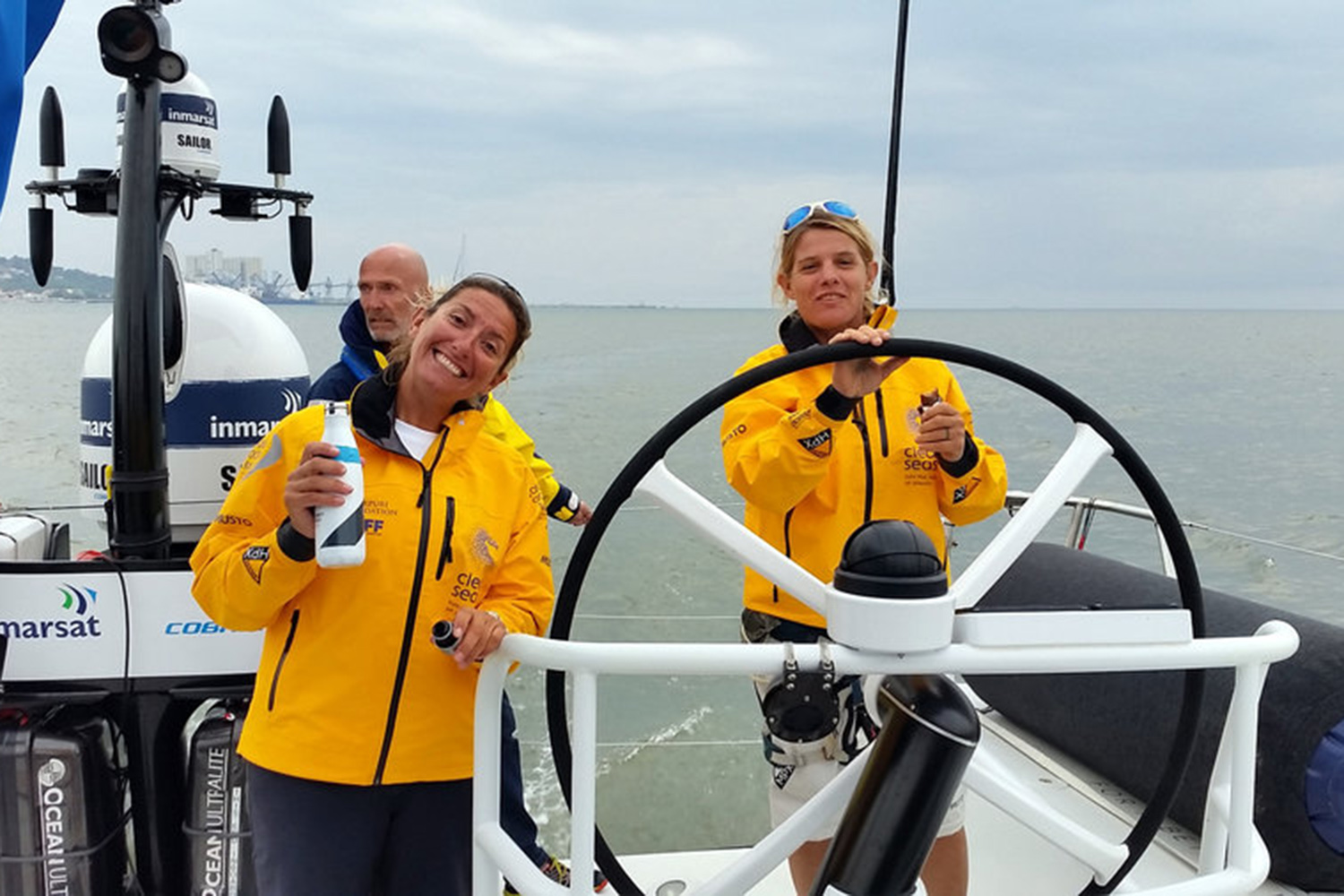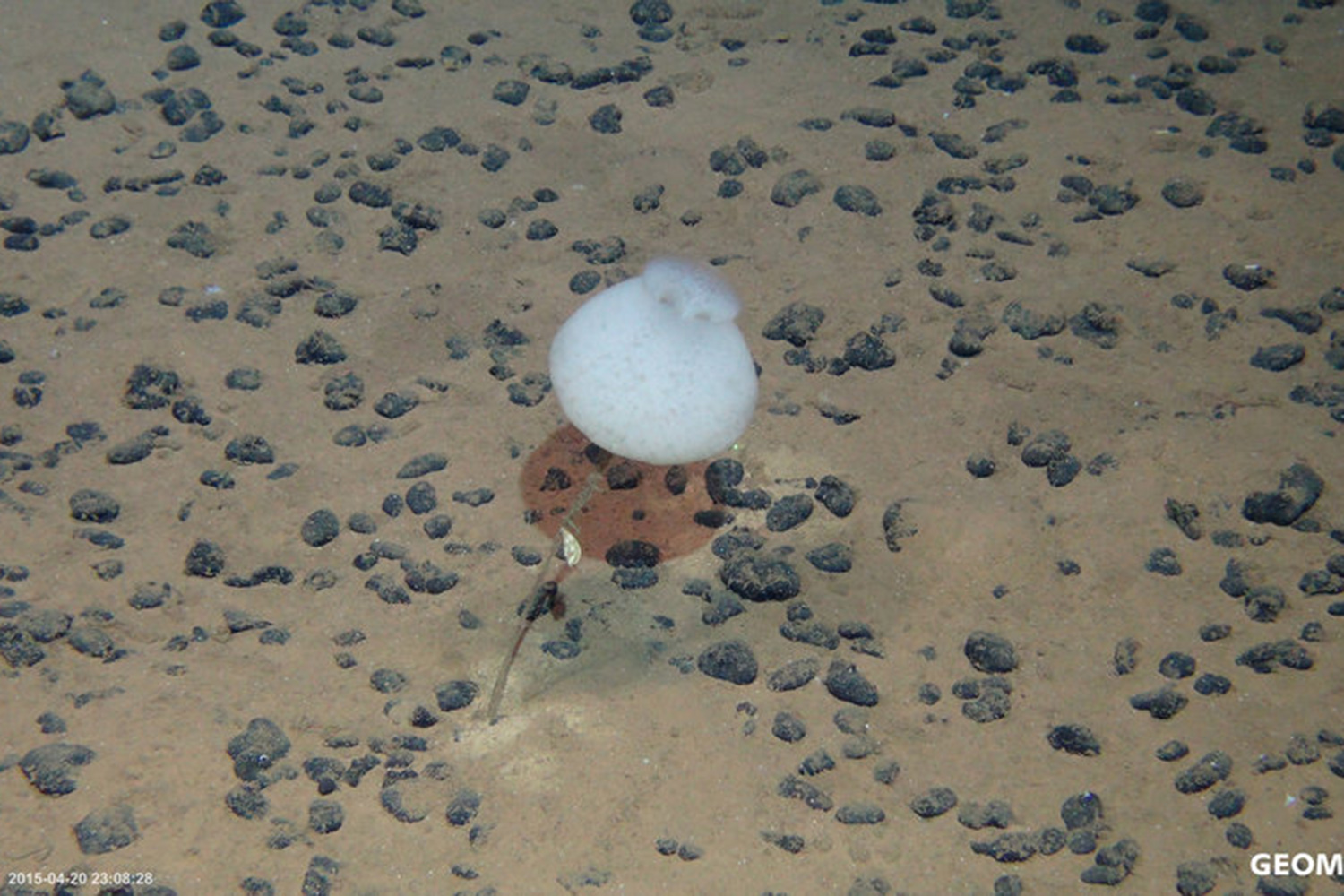The great ocean currents with their immense energy transport have a decisive influence on the atmosphere and thus the climate. But besides this well-known fact life in the seas also plays an important role for climate-related processes. Especially the smallest creatures, tiny planktonic organisms, take up carbon near the surface, process it, build up their bodies with it or excrete it. The carbon incorporated in the excretory products or dead organisms then sinks to the seabed. The constant flow of organic particles towards the deep sea is also called "marine snowfall".
This snowfall is most intense where strong biological primary production can be observed near the surface. This for example is the case along the equator in the Pacific and Atlantic Ocean. However, it is hardly known how the particles are distributed at depth and which processes influence this distribution. Today, an international team of scientists led by the GEOMAR Helmholtz Centre for Ocean Research Kiel has published the first study with high-resolution data on particle density in the equatorial Atlantic and Pacific Ocean down to a depth of 5000 meters in Nature Geoscience. "The analysis of the data has shown that we have to revise several previously accepted ideas on the flow of particles into the deep sea," says Dr. Rainer Kiko, biologist at GEOMAR and lead author of the study.
The team, which includes colleagues from France and the US, has analyzed data collected during several expeditions of the German research vessels METEOR and MARIA S. MERIAN, the US research vessel RONALD H. BROWN and the French research vessels L'ATALANTE and TARA. The data were obtained with, among other sensors, the so-called Underwater Vision Profiler (UVP). The UVP is a special underwater camera that can be lowered down to 6000 m depth. During the decent, it takes 10 images per second, which allows particles to be counted and small plankton organisms to be identified.
"Up to now, it was usually assumed that we have the largest particle density close to the surface and that it decreases continuously with depth," explains Dr. Kiko, "our data show, however, that the particle density increases again in 300 to 600 meters of water depth". The researchers explain this observation with the daily migratory behavior of many plankton organisms, which retreat into corresponding depths during the day. "This depth seems to be the loo for many species. That's why we find a lot of particles there," says Dr. Kiko.
These microscopic particles very slowly sink deeper and are still detectable at 5000 meters depth. "This is also surprising, because it has been assumed that only few larger, rapidly sinking particles can be found deeper than 1000 meters," explains Dr. Kiko.
Thanks to the interdisciplinary collaboration of biologists and physical oceanographers, the team could explain yet another phenomenon. "In the equatorial region, the flow of particles into the deep sea is much greater than in regions that are only 100 kilometers further north or south," says Dr. Kiko. Prof. Dr. Peter Brandt, an oceanographer at GEOMAR, provides the explanation: "There are strong, eastward flowing deep currents north and south of the equator, both in the Pacific and the Atlantic. They form natural barriers that prevent further north-south propagation of the particles."
All in all, the scientists were able to show the importance of biological and physical processes for the biological carbon pump. "Of course, we need further observations on the distribution of different planktonic groups in the ocean in order to further refine the image," emphasizes lead-author Dr. Kiko. At https://planktonid.geomar.de non-scientists can help in the task to sort the enormous amount of plankton images the UVP delivers. "On the PlanktonID website interested people can help us to identify zooplankton, but they will also find additional information on the current study, such as the functioning of the UVP," adds Dr. Kiko.
Please note:
Researchers from GEOMAR, the Kiel University, the University of Toulouse (France), the University of Fairbanks (Alaska, USA), the Laboratoire d'Oceanographie de Villefranche-sur-Mer (France) the Lamont-Doherty Earth Observatory (USA) and the Sorbonne Universités (France) contributed to this study. It was supported by the German Science Foundation (DFG) through the Collaborative Research Centre (SFB) 754, the BMBF project RACE as well as by the French Center National de la Recherche Scientifique (CNRS).
Reference
Kiko, R., A. Biastoch, P. Brandt, S. Cravatte, H. Hauss, R. Hummels, I. Kriest, F. Marin, A. M. P. McDonnell, A. Oschlies, M. Picheral, F. U. Schwarzkopf, A. M. Thurnherr and L. Stemmann (2017): Biological and physical influences on marine snowfall at the equator. Nature Geoscience; Advance Online Publication,
http://dx.doi.org/10.1038/ngeo3042
Links:
planktonid.geomar.de The Citizen-Science-Project PlanktonID
www.sfb754.de The Collaborative Research Centre (SFB) 754
Contact:
Jan Steffen (GEOMAR, Communication & Media), Tel.: 0431 600-2811
presse@geomar.de
…



